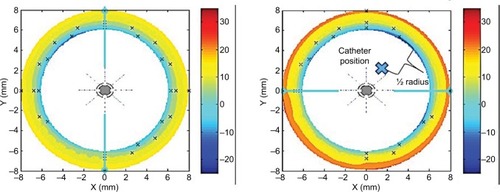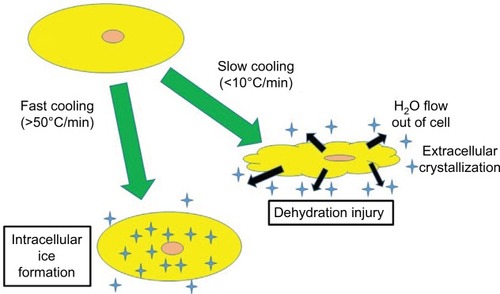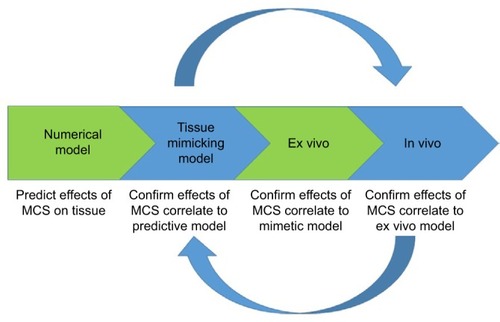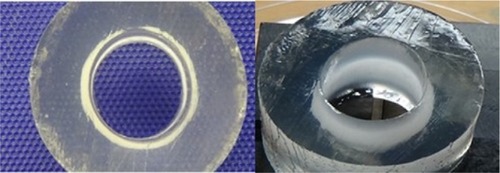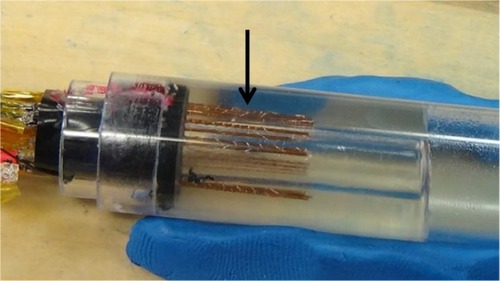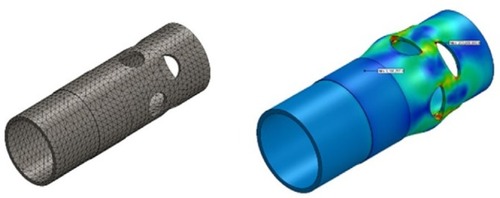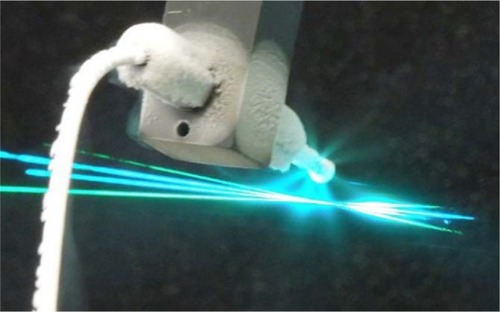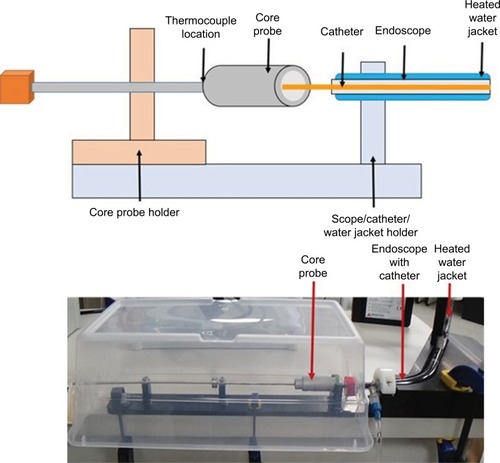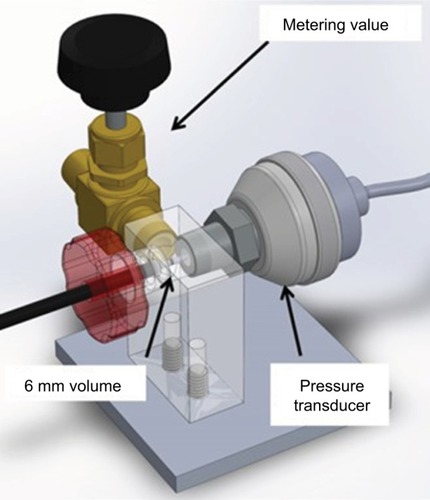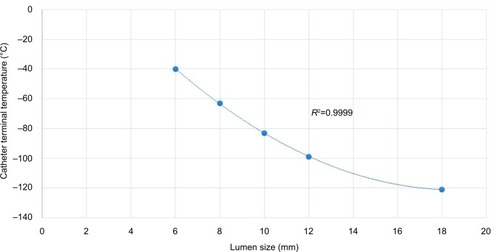Figures & data
Table 1 Thermal property data for porcine tracheal mucosa (Analytical Answers, Inc., Woburn, MA, USA)
Table 2 Thermal property data for high-temperature nontoxic (HTNT) gel (Analytical Answers, Inc., Woburn, MA, USA)
Figure 6 Temperatures as a function of spray time for 18 mm lumen diameter (T Ch refers to each embedded thermocouple).
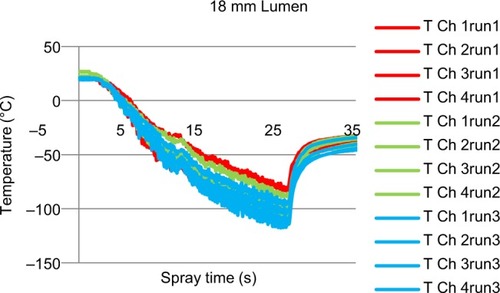
Table 3 Phase Doppler particle analyzer results of drop size for various catheter types
Figure 9 Open-end catheter droplet size (DV0.5) across spray plume.
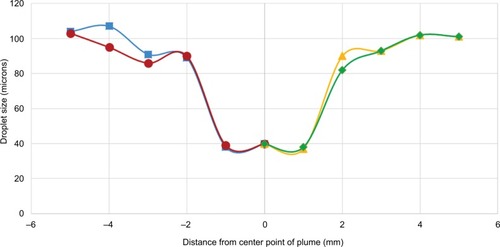
Figure 10 Radial catheter laser sheet imaging showing droplet counts as a function of position (inset image in lower right corner shows enlarged center pattern image. Inset scale not shown).
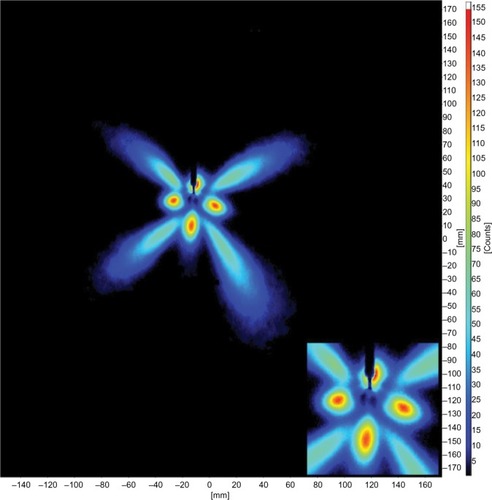
Figure 13 NBT stain identifies cryothermic effects by staining nontreated cells (dark blue), whereas treated cells remain unstained.
Abbreviation: NBT, nitro blue tetrazolium.
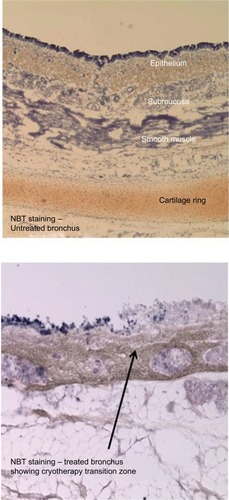
Figure 15 Representative porcine model distal trachea.
Abbreviation: MCS, Metered Cryospray™.
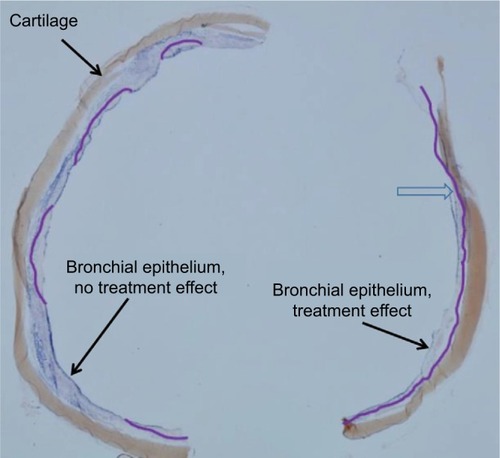
Figure 16 Correlation of HTNT gel temperatures with DOI.
Abbreviations: DOI, depth of injury; HTNT, high-temperature nontoxic; Poly., polynomial fit.
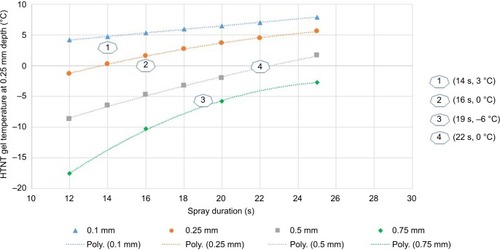
Table 4 Ballistic gel length of injury measurements
Figure 17 Length of injury measurements of MCS in an 8 mm diameter of HTNT gel.

Figure 18 Centered spray (left) and off-center spray (right) final temperature profiles in HTNT gel with a 12 mm lumen.
Abbreviation: HTNT, high-temperature nontoxic.
